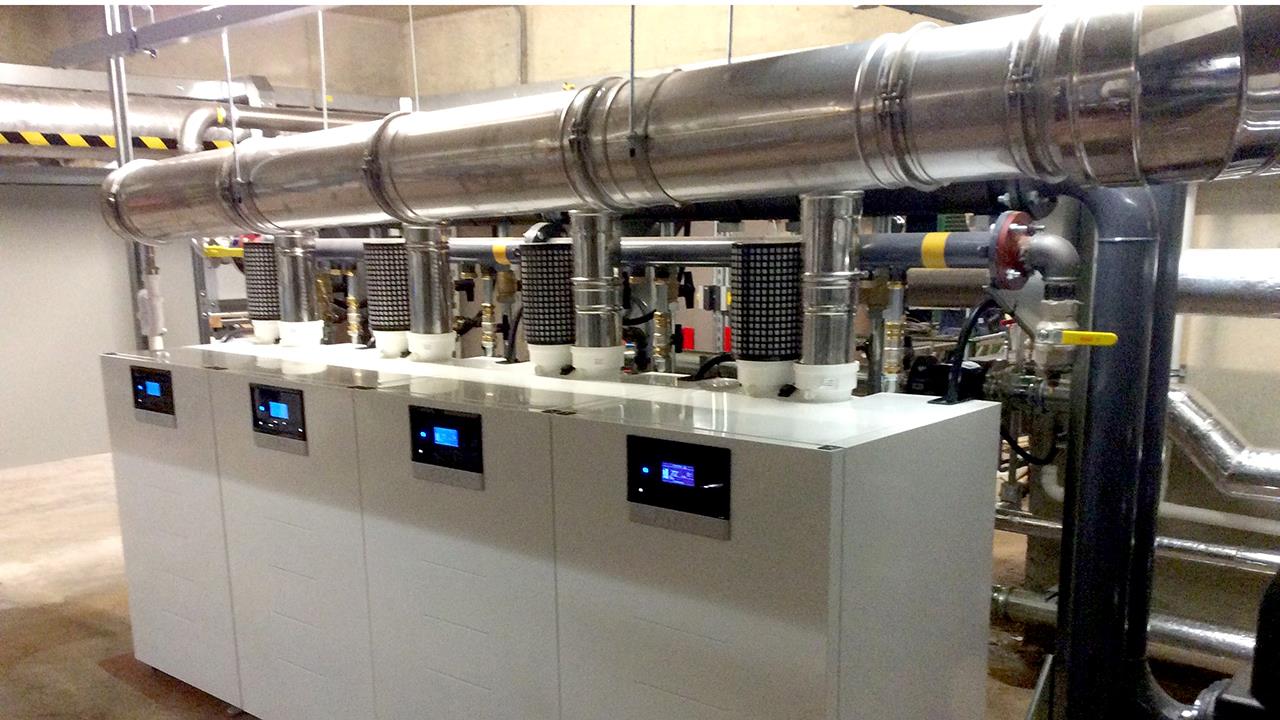

From schools and care homes, through to hotels and retail premises, there are a variety of light commercial applications out there, each with their own individual requirements. As a result, boiler design and engineering have taken huge strides, in order to ensure units are able to provide the necessary levels of heating and hot water, without compromising on performance.
Advances in boiler technology have resulted in improved levels of performance, especially in key components, such as heat exchangers, pumps, and controls, which have key roles to play in maximising reliability and energy efficiency. In fact, some of the more recent entries to the market (such as ATAG Commercial’s XL-F and XL-W boilers) have taken things a step further by integrating all the main components within the unit itself, significantly reducing installation time, costs, and space required.
In addition, by ensuring all key components are accessible from the front of the boiler, installation, ongoing servicing, and maintenance are made easier, thereby reducing engineer time on-site.
Gas condensing boilers have been the main heat source for commercial systems for the last 20 years. Although renewable technologies (such as heat pumps) are now entering the market, commercial boilers still have plenty to offer. The key factor remains to ensure the correct model is specified and installed for the job in hand.
Let’s take a school as an example. This winter may see some schools forced to make some unpalatable decisions when it comes to heating their buildings. Indeed, educational establishments reportedly spend as much as £63,000 a month on energy (with £13,000 of this on gas, according to TES), so it is important they fit the latest, state-of-the-art commercial boilers to benefit from reliable, future-proof, and energy-efficient heating systems.
If a school’s heating and hot water demands are to be successfully met, boilers need to be flexible yet powerful, with an equal balance between maximising efficiency and minimising downtime in the event of servicing or repair.
However, while sourcing a boiler that claims to meet all these requirements on paper may initially seem straightforward, opting for a product just to ‘tick all the right boxes’ does not guarantee it will achieve the desired results. After all, there are a number of other important factors to consider.
For instance, selecting a boiler where all key parts and wiring are housed inside a single unit removes the need to fit any additional, complex system components, while also reducing installation time. A simplified arrangement, as well as having wheels on the boiler to easily position it inside a plant room, is beneficial to school environments. Furthermore, opting for products equipped with dual heat exchanger technology saves having to fit multiple boilers in cascade, not to mention reducing installation time significantly.
Elsewhere, in the case of hotels as an example, boilers need to be able to cope with peak heating and domestic hot water demands – while avoiding downtime at all costs. After all, there is no way a hotel or a restaurant can operate successfully without heating or hot water. This is why businesses in this sector need installations to be designed with some form of backup in place, so they are well-prepared in the unfortunate event of a breakdown or something going wrong.
Boilers equipped with dual heat exchangers inside a single unit (such as ATAG’s XL-F and XL-W), boast the massive advantage of built-in backup, as each heat exchanger can operate independently of the other. This level of built-in redundancy can greatly benefit a hotel (and a school) installation, as neither can afford to be without heating or hot water. So, with such a setup, staff and guests can still enjoy ample levels of heating and hot water, while the venue does not need to be shut down should a boiler require maintenance or repair.
Of course, maintenance is vital for hotels, not only in terms of compliance with regulations, but also to ensure everything is operating efficiently – as well as helping identify any potential faults before they become an issue. This emphasises the importance of regular servicing, as it helps prolong the life of key components while keeping everything running smoothly. This has led to the latest boilers being constructed so all the pumps, valves, and connections can be fully accessed from the front, further simplifying the servicing procedure.
Whether a boiler is fitted in a hotel, school, retail, or healthcare environment, its heat exchanger plays a key role. Installing units with stainless steel heat exchangers will reap great rewards, thanks to the material’s renowned long-term performance and reliability credentials, especially when used as part of a high-efficiency heating system.
Finally, when assessing an application for the most suitable light commercial boiler, size is another key factor to consider – specifically in terms of how much space is available inside a plant room. Some units have a big physical footprint and can occupy a large area. Fortunately, there are now lightweight and compact models on the market, allowing multiple units to be fitted on the same system. This also helps maximise energy efficiency, thanks to improved turndown ratios and modulation capacity.
So, whatever the commercial application, it is highly recommended installers opt for boilers manufactured from the highest quality materials to ensure years of trouble-free use. Ease of access to key components aids servicing and repairs in the event of any issues developing, while dual heat exchanger models offer built-in redundancy and prevent downtime. Reliable performance will help businesses to meet their budgeted utilities targets, while optimal levels of efficiency will keep fuel bills to a minimum.
If you'd like to keep up-to-date with the latest developments in the heating and plumbing industry, why not subscribe to our weekly newsletters? Just click the button below and you can ensure all the latest industry news and new product information lands in your inbox every week.